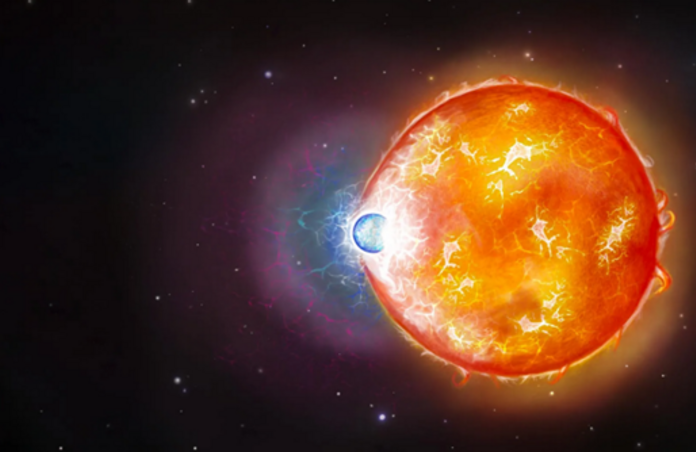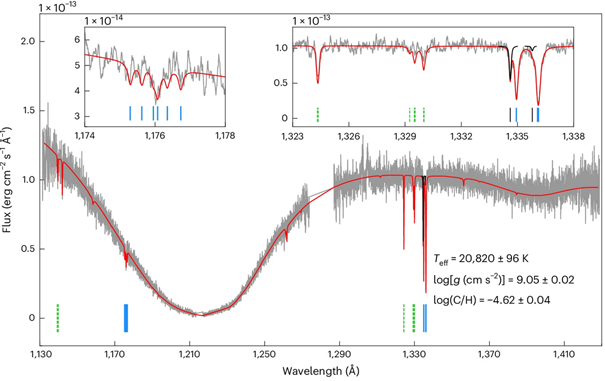Team Uncover Hidden White Dwarf Merger Remnant

Current models of white dwarf evolution suggest that the most massive examples are the consequence of a previous stellar merger. Typical stars will have a thick envelope composed of hydrogen and helium, preventing visibility of deeper layers, often abundant in carbon. However, following a merger, the resulting stellar envelope becomes much thinner, allowing light scattering off carbon to more readily escape the star. As such, identifying carbon features in a stellar spectrum, usually within optical bandwidths, is a strong indicator of merger remnants.
Now, a new study led by Dr. Snehalata Sahu reports the discovery of a hidden merger remnant, WD 0525+526. This ultra-massive white dwarf, located just 39 pc away, exhibits a carbon abundance five orders of magnitude lower than previously known examples. Such abundances are practically invisible to optical methods, but the team were able to detect key signatures within the far UV range, leveraging data captured using the Hubble Space Telescope (HST). Under normal circumstances, this star would have never been considered a merger remnant.

The team modelled the star’s envelope structure using the STELUM code, which accounts both for atomic diffusion and convection processes. They found that an extremely thin hydrogen layer, making up just 10-11.8 % of the stellar mass, sits atop a carbon-rich region. They also find the helium content to also be severely depleted relative to stellar models, which would be consistent with a prior merger that destroyed most of the original outer layers.
The authors suggest that this merger must have been relatively recent, citing the high temperatures within the star, as well as the extremely low abundance of measured carbon. That said, detecting any carbon at this stage is quite unusual, since the carbon-rich regions of the star should not be convective yet. Typically, the outer layers of the star would first have to cool, to produce a strong enough temperature gradient, at which point convective processes are able to dredge up subsurface carbon. The authors explain this with a process called semi-convection.

Semi-convection is an extremely slow mixing mechanism and the consequence of a strong chemical gradient within the stellar interior. Convective envelopes typically form under extreme temperature gradients, causing these to rise to cooler regions of the star. However, due to the change in chemical composition, hotter envelopes also comprise of heavier particles, which would have to do more work against gravity to rise above lighter ones. As such, WD 0525+526 is likely undergoing a form of suppressed convection.
Over the next several billion years, as it cools, WD 0525+526 is expected to develop a deep convective envelope that will bring more carbon to the surface, transforming it into a carbon-rich DQ-type white dwarf.
The authors note that refining atmospheric models to include diffusion in stratified hydrogen–carbon mixtures could improve abundance estimates and confirm the role of semi-convection. Furthermore, systematic UV surveys of ultra-massive white dwarfs could reveal whether WD 0525+526 represents an unusual case or a common but previously overlooked stage in the aftermath of stellar mergers.
--
Journal Source: S. Sahu et al., A hot white dwarf merger remnant revealed by an ultraviolet detection of carbon, Nature Astronomy, (2025), DOI: https://doi.org/10.1038/s41550-025-02590-y
Cover Image Credit: Dr. Snehalata Sahu/University of Warwick
